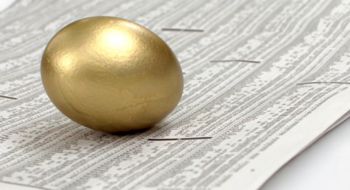
Originally from our sister publication, Advisor.ca.
As the U.S. economy continues to improve, investors seem to have lost their appetite for gold. Seen as a traditional safe haven, gold prices surged over the past decade, rising from just $253 in 2001 to nearly $2,000 in 2011.
Lately, however, investors have pulled back and become wary about putting money into bullion, with prices dropping 9% since February, hitting a 10-week low of US$1,627.68 this week, and only seeing a small increase of US$4.90 to US$1,647.40 per ounce this morning.
In addition, gold funds are seeing major net decreases; the Claymore Gold Bullion ETF, for example, has declined 13.6%, from a high of $17.18 in the summer.
Gold has had a rough past seven months, having seen several wide swings since September and with prices in a serious downtrend.
Tom Aspray, contributor to Forbes, believes that “further price weakness is needed to create the less-bullish environment necessary for gold to complete a sustainable bottom.”
In a release on GoldAlert.com, Deutsche Bank analyst Daniel Brebner agreed that improved U.S. sentiment has negatively impacted gold prices and that “the big central bankers seem like they are stepping back a bit” due to normalizing conditions.
Deutsche Bank recently restated its gold price target of $1,825 per ounce and forecasts that prices will only rebound modestly over the course of the year.
The sale of American Eagle gold coins by the U.S. Mint, considered an indicator of market sentiment, has fallen to their lowest levels since mid-2008, down about 70% from last year.
Some investors, due to the fact that gold doesn’t have the same profile as the over the past two years, expect prices to fall to as low as $1,500.
The physical markets of Asia and the Middle East are also quiet. In India specifically, a main consumer of physical gold, jewelers closed their shops last week in protest over the country’s plan to double taxes on gold imports.
